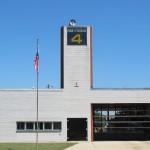 Fire Station #4
Fire Station #4
- Built: 1967
- Design Architect: Robert Venturi (Venturi and Rauch) – Philadelphia, Pennyslvania
- Assistant Design Architect: John Rauch (Venturi and Rauch) – Philadelphia, Pennsylvania
- Project Manager: Gerod Clark (Venturi and Rauch) – Philadelphia, Pennsylvania
The Columbus Fire Department asked architect Robert Venturi to design a simple functional building and as rare as it is in the world of architecture that was exactly what what he delivered. The building committee requested an ordinary building that was easy to maintain. Venturi’s design was a trapezoidal-shaped structure of cinderblock, red unglazed brick, white glazed brick and glass. The 37 foot hose drying tower located at front center provides a focal point to the otherwise low utilitarian building. The building is divided into 5 functional areas: garage/engine area, kitchen, lounge, sleeping area and the hose drying tower. The trapezoidal shape was largely a result of having to fit all necessary functions onto a small 200 by 125 ft site. As a result if you look at the floorplan, there are very few 90 degree corners in the building.
This was the first Columbus building other than a school to have it’s design fees paid by the Cummins Foundation Architectural program. Despite it unique design by a prominent architect it was one of the least expensive fire stations ever built in Columbus. The hose drying tower was nearly eliminated in a quest to keep the budget under $100,000 but Fire Chief Edgar Harris convinced the city that it was necessary. This one of the early designs in the career of Robert Venturi who went on to win the Pritzker Prize, the highest honor in the architectural world. As a result this little fire station gets frequent visits by architects and architecture fans anxious to see the work of Robert Venturi. Firefighters stationed at the building are often bewildered and amused by those giving so much attention to this little building.
The floor plan lays out the equipment space on the right with storage and living quarters on the left and the hose-drying tower in the middle front. The living quarters section of the building is lower than the apparatus area so a parapet wall was utilized to balance the heights and enhance the scale.
At the time of construction the building was located along a busy highway with a number of planned but as yet undeveloped apartments and tract housing. Venturi wanted his simple building to stand out as the traffic sped past. He used his flat front facade to give his simple building a unique look. The white glazed brick covers most of the front facade with the red brick from the sides wrapping around the corners. The different brick colors change the proportions of the building making it appear larger than it actually is. The hose drying tower is semi-circular with it flat side lined up with the front facade. An accent is provided by the 2 black bricks placed in the tower wall at the point where the tower joins the roof.
Venturi called this “billboard architecture” or “second glance architecture”. The unique front facade and color scheme makes it spatially disorienting turning this “super-ordinary, super-economical building – here on a super-dull road” into an object that can’t be ignored. Venturi made the sides and rear of the building as simple as possible and treated the front as if it were a sign. It briefly attracts your attention as you speed past on the busy road. Venturi has described buildings like this as as “decorated sheds”, simple, even boring buildings that use signs or decorative elements to describe the function of the building. In this case the hose drying tower with the giant number on top, the white brick and the large flagpole in front convey a sense of civic importance to the building. It is meant to look like a fire station and not to convey any other image.
The building was completed in 1967 and opened on January 2, 1968
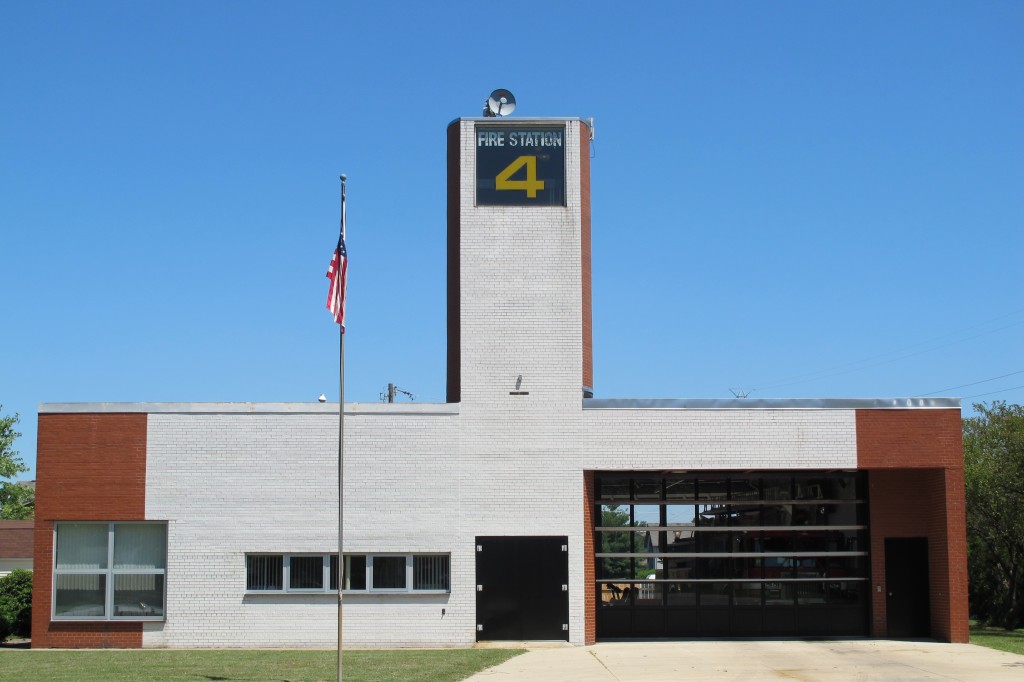 Front view (photo by Ricky Berkey)
Front view (photo by Ricky Berkey)
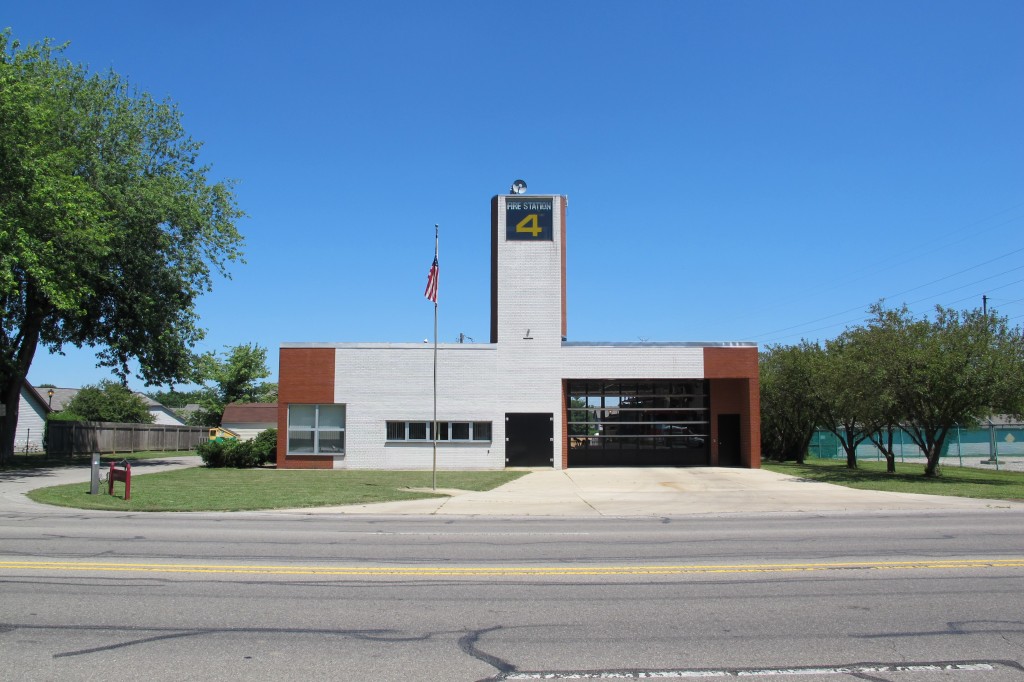 Front view from across the street (photo by Ricky Berkey)
Front view from across the street (photo by Ricky Berkey)
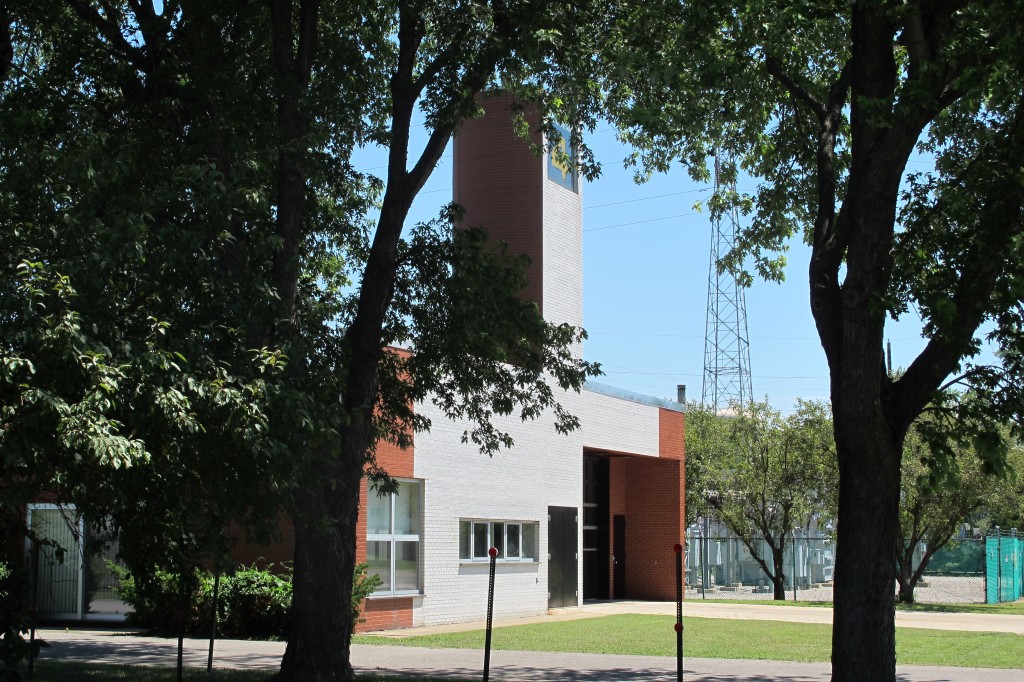 View through the trees (photo by Ricky Berkey)
View through the trees (photo by Ricky Berkey)
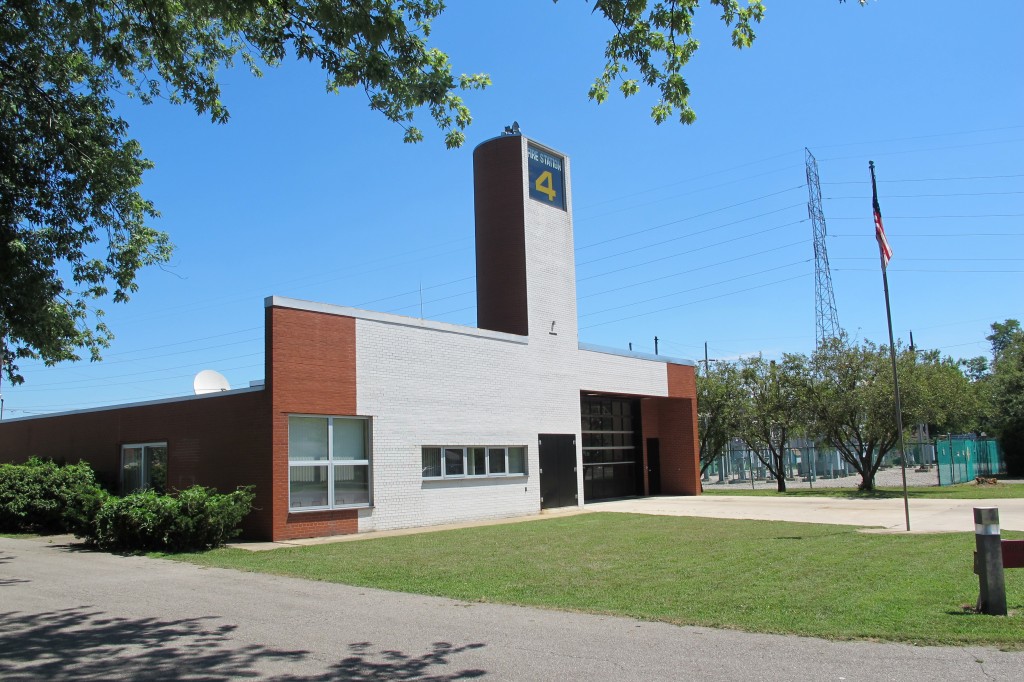 View from the left (photo by Ricky Berkey)
View from the left (photo by Ricky Berkey)
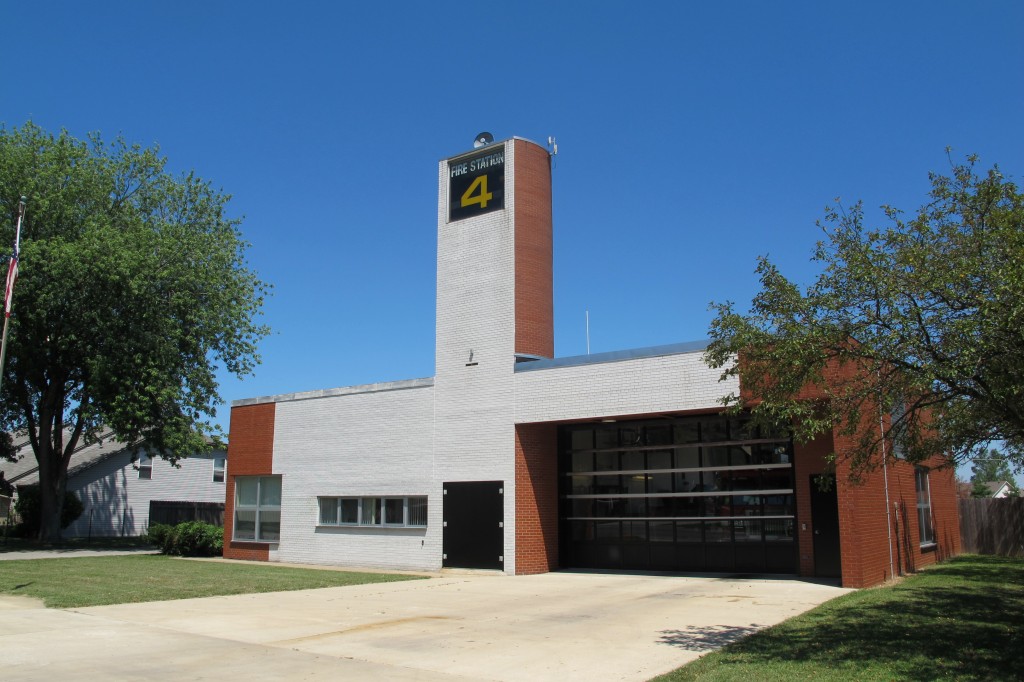 View from the right (photo by Ricky Berkey)
View from the right (photo by Ricky Berkey)
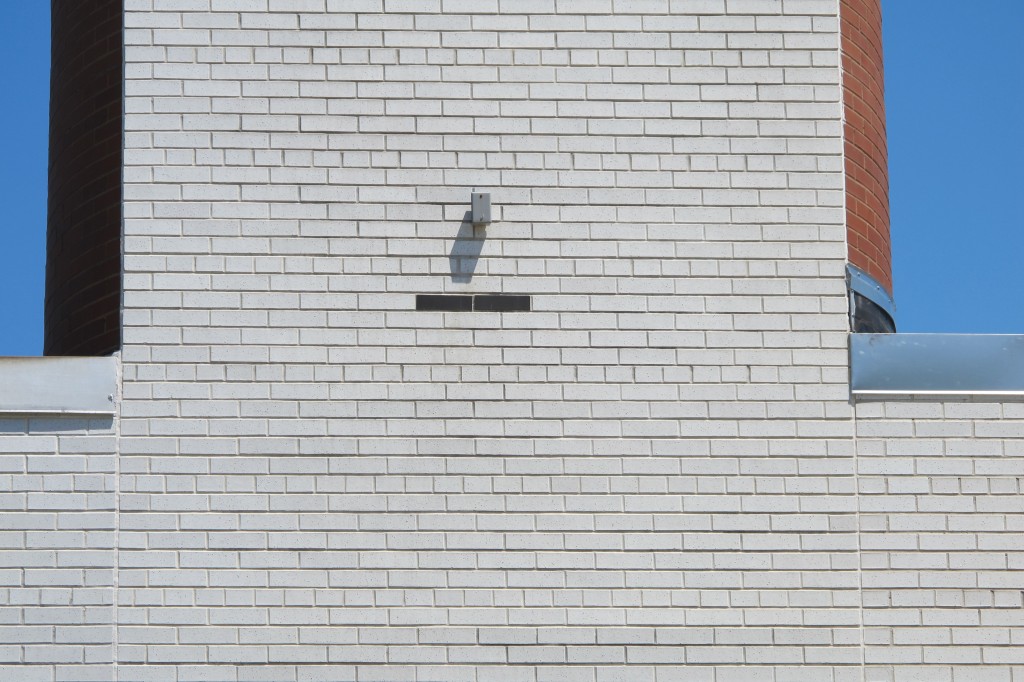 Venturi’s “signature” black bricks on the hose tower (photo by Ricky Berkey)
Venturi’s “signature” black bricks on the hose tower (photo by Ricky Berkey)
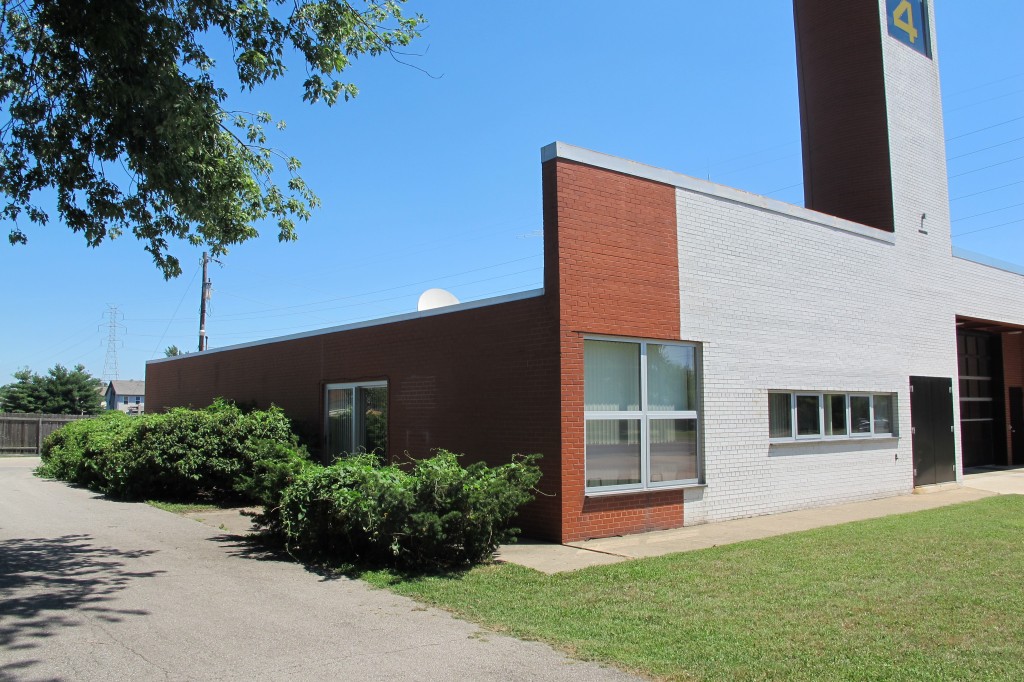 Parapet wall (photo by Ricky Berkey)
Parapet wall (photo by Ricky Berkey)
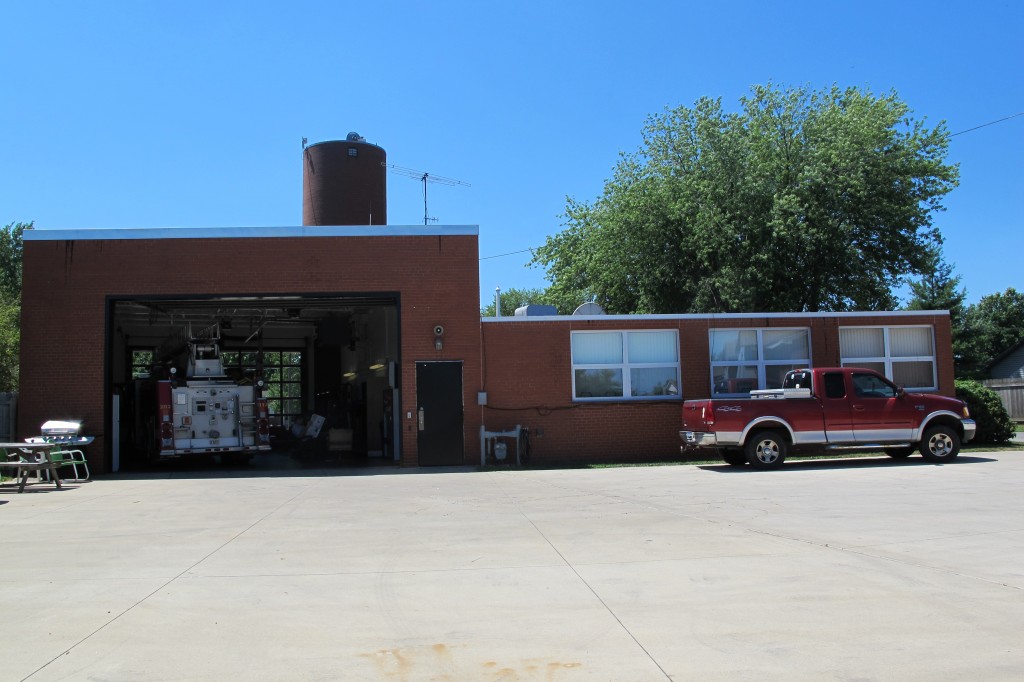 Rear view (photo by Ricky Berkey)
Rear view (photo by Ricky Berkey)
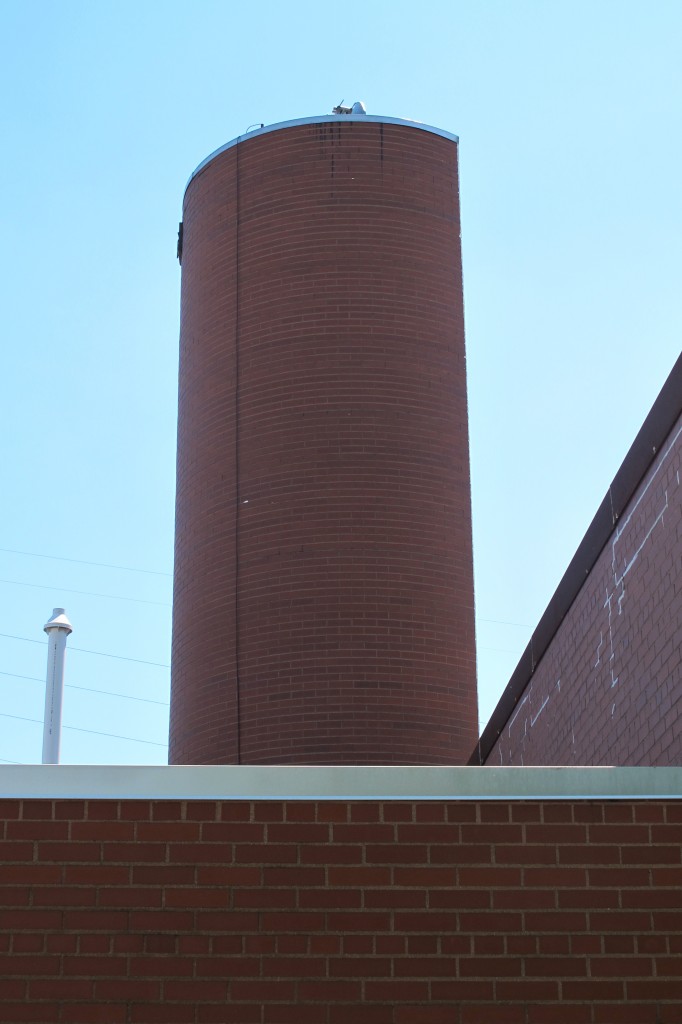 Hose drying tower (photo by Ricky Berkey)
Hose drying tower (photo by Ricky Berkey)
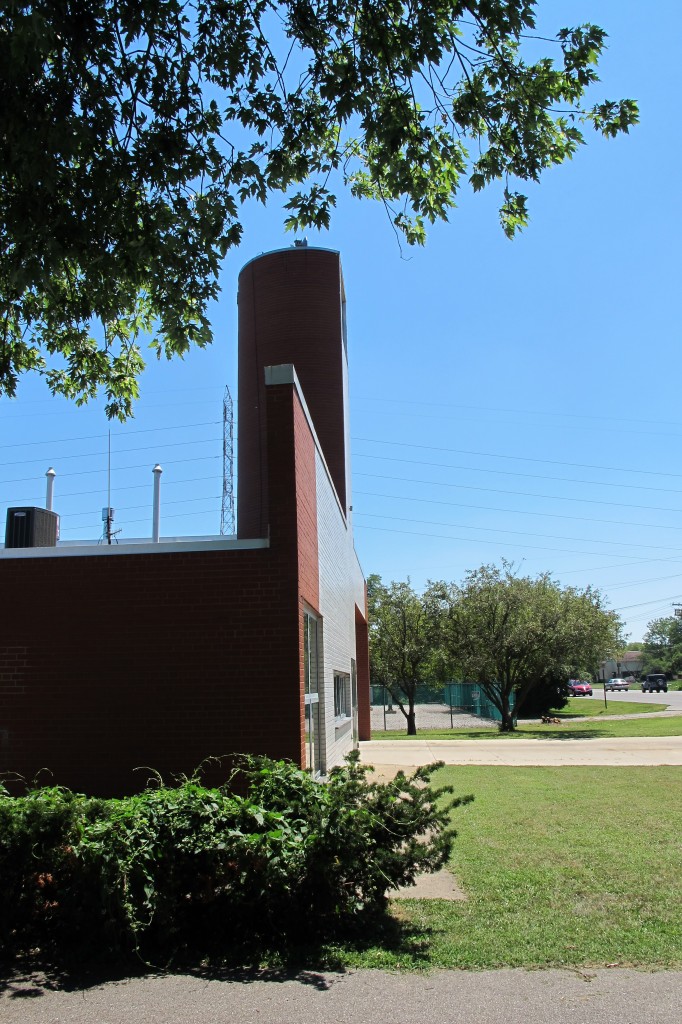 Side view of front wall (photo by Ricky Berkey)
Side view of front wall (photo by Ricky Berkey)
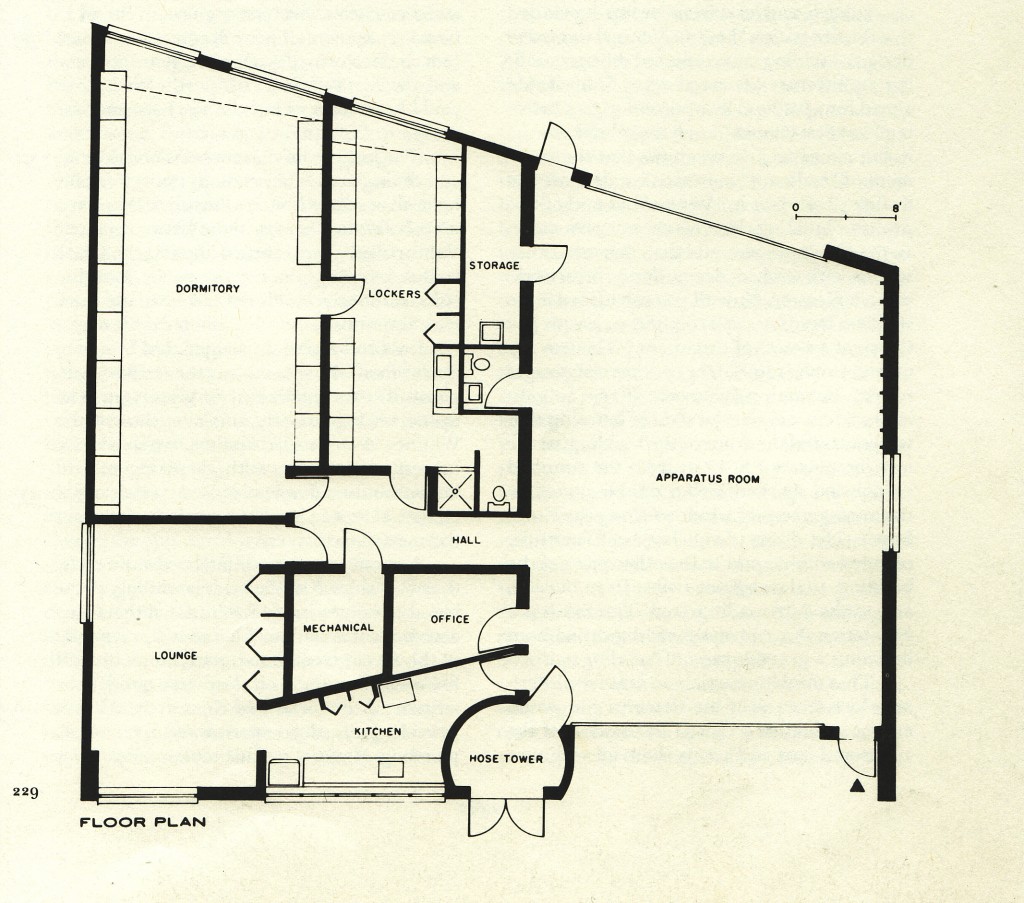 Floorplan of the building (graphic used pending permission, do not copy)
Floorplan of the building (graphic used pending permission, do not copy)
The Architects
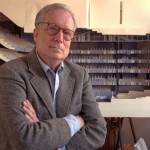 Robert Venturi
Robert Venturi
- Born June 25th, 1925 in Philadelphia, Pennsylvania
- Princeton University – Princeton, New Jersey(1950)
- American Academy of Rome – Rome, Italy (1956)
Robert Charles Venturi, Jr. was born in Philadelphia in 1925. He was educated at Princeton and was the recipient of the Rome Prize in Architecture and was in residence at the American Academy of Rome. He has been a faculty member at the University of Pennsylvania and at Yale.
Early in his career he worked for both Eero Saarinen and Louis Kahn. Venturi started his own firm in 1960 with partner William Short as Venturi and Short. After Short left the firm he formed a partnership with John Rauch in 1964 as Venturi and Rauch, becoming Venturi, Rauch and Scott Brown in 1967 when wife Denise Scott Brown joined the firm. John Rauch left the firm in 1989 and the firm became Venturi, Scott Brown and Associates (VSBA). The firm won the American Institute of Architect’s (AIA) Firm of the Year Award in 1985. Over the years the firm has completed more than 400 projects.
He has lectured widely and has authored a number of very influential (and controversial) books including: “Complexity and Contradiction in Architecture” (1966) and “Learning from Las Vegas (1985). He is considered to be one of the the most influential architects of the twentieth century through his architecture as well as his writing and teachings. He became known for his writing and lectures attacking modernist minimalism which led to the post-modernist movement. His famous reaction to Mies van der Rohe’s famous modernist dictum “Less is More” was the mocking “Less is a Bore”. The culmination of his many awards was the Pritzker Prize in Architecture awarded in 1991.
Selected Robert Venturi Projects
1964: Vanna Venturi House – Philadelphia, Pennsylvania
1964: Guild House – Philadelphia, Pennsylvania
1967: Lieb House – Barnegat Light, New Jersey
1967: Fire Station #4 – Columbus, Indiana
1971: Trubek and Wislocki Houses – Nantucket, Massachusetts
1972: Brant House – Greenwich, Connecticut
1974: Dixwell Fire Station – New Haven, CT
1976: Allen Memorial Art Museum modern addition at Oberlin College – Oberlin, Ohio
1976: BASCO Showroom – Philadelphia, Pennsylvania
1976: Franklin Court – Philadelphia, Pennsylvania
1978: Best Products Catalog Showroom – Langhorne, Pennsylvania
1980: Freedom Plaza – Washington, D.C.
1981: Coxe-Hayden House and Studio – Block Island, Rhode Island
1983: Gordon Wu Hall at Princeton University – Princeton, New Jersey
1983: House in New Castle, Delaware (1983)
1986: Lewis Thomas Laboratory at Princeton University – Princeton, New Jersey
1990: House in East Hampton – Long Island, New York
1991: Seattle Art Museum – Seattle, Washington
1992: Children’s Museum – Houston, Texas
1994: Charles P. Stevenson Jr. Library at Bard College – Annondale-on-Hudson, New York
1996: Trabant Student Center at the University of Delaware – Newark, Deleware
1996: Museum of Contemporary Art – San Diego, California
1997: Mielparque Nikko Kirifuri Resort – Nikko National Park, Japan
1998: Gonda (Goldschmied) Neurosciences and Genetics Research Center at UCLA – Los Angeles, California
1999: Provincial Capitol Building – Toulouse, France
2000: Frist Campus Center at Princeton University – Princeton, New Jersey
2000: Rauner Special Collections Library at Dartmouth College – Hanover, New Hampshire
2000: Perelman Quadrangle at the University of Pennsylvania – Philadelphia, Pennsylvania
2005: Dumbarton Oaks Library at Harvard University – Washington, D.C.
2005: Undergraduate Science Building, Life Sciences Institute and Palmer Commons complex at the University of Michigan – Ann Arbor, Michigan
2005: Biomedical Biological Science Research Building at the University of Kentucky – Lexington, Kentucky
2005: Baker/Berry Library at Dartmouth College – Hanover, New Hampshire
2008: Episcopal Academy Chapel – Newtown Square, Pennsylvania
John Rauch
- Born in Philadelphia, Pennsylvania
- University of Pennsylvania – Philadelphia, Pennsylvania
John Rauch was born in Philadelphia and educated at the University of Pennsylvania. He became partners with Robert Venturi in 1964 as Venturi and Rauch becoming Venturi, Rauch and Scott Brown in 1967. Rauch left the firm in 1989.
Links/References
Venturi, Scott Brown and Associates website:
Fire Station #4 on Venturi’s website:
“Complexity and Contradiction in Architecture” (1966): Venturi’s influential and controversial book
“Learning from Las Vegas: The Forgotten Symbolism of Architectural Form” (1977): Another interesting and controversial Venturi book
City of Columbus: official City of Columbus website
Columbus Indiana Architectural Archives
Columbus Indiana Architecture Digital Archives: A small portion of the Columbus Indiana Architectural Archives available online from the IUPUI digital library
3D Models of Columbus Architecture Executed in Google SketchUp:
The Republic Newspaper – Columbus, Indiana newspaper
Bartholomew County Public Library
Historic Columbus Website – David Sechrest’s tribute to Columbus History
Historic Columbus Message Board – a companion interactive forum to the David Sechrest historical website
Bartholomew County Historical Society
 Click HERE for a Calendar of Upcoming Events in the Columbus Area.
Click HERE for a Calendar of Upcoming Events in the Columbus Area.
Click HERE for information about Tours of Columbus Architecture and Design including the Miller House.
 Ricky Berkey
Ricky Berkey
Email me: rickyberkey@gmail.com
